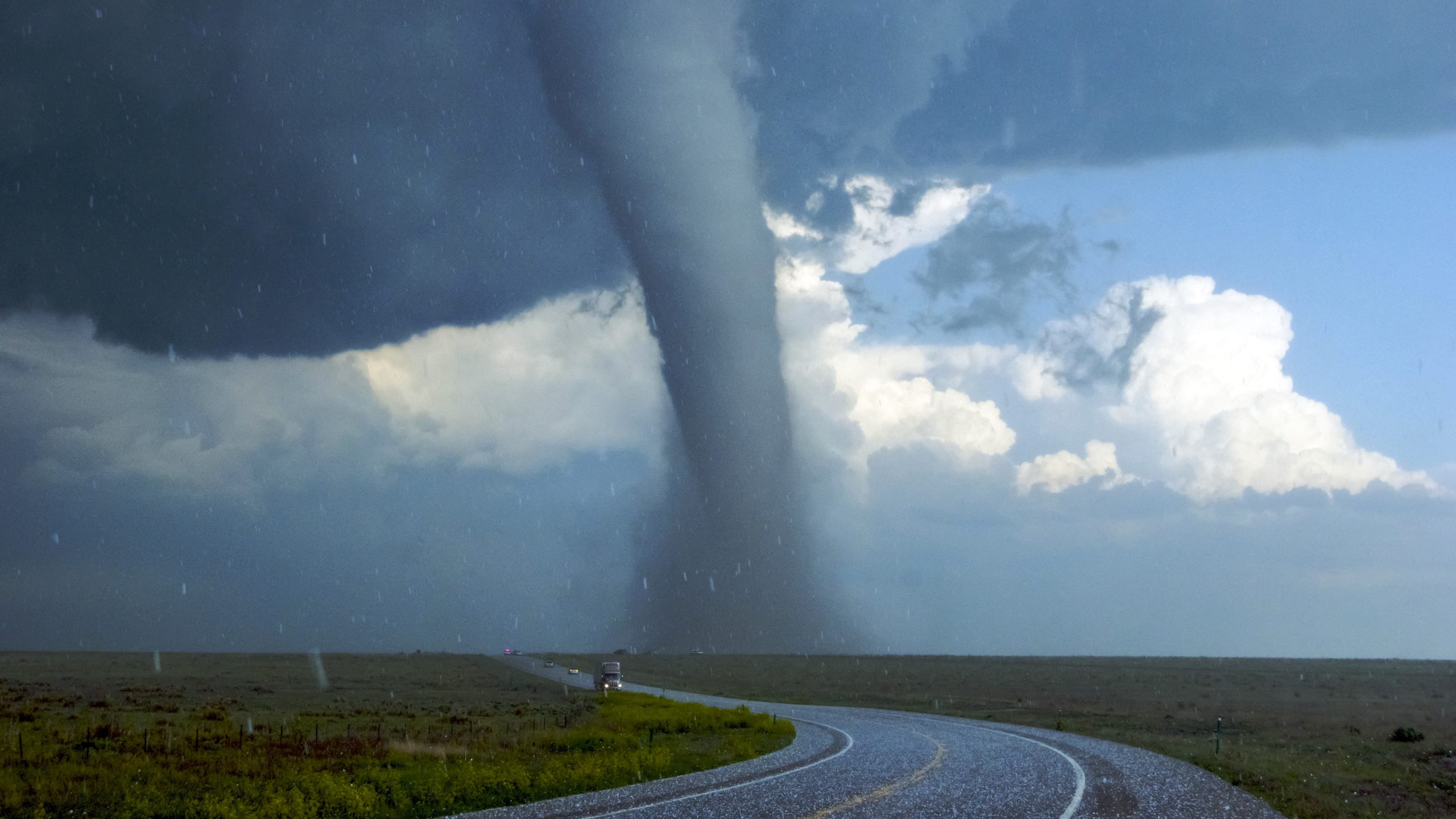**What Does a Tornado Look Like?**
Have you ever wondered what a tornado looks like? Tornadoes are one of the most powerful and destructive natural phenomena on Earth. These swirling columns of air can cause widespread devastation in a matter of minutes. In this article, we will explore what tornadoes look like, their characteristics, and how to identify them. So, let’s dive right in.
Tornadoes come in various shapes and sizes, but they typically have a distinct appearance that sets them apart from other weather phenomena. When a tornado forms, it often resembles a dark, menacing funnel-shaped cloud extending downward from a larger thunderstorm cloud. This funnel cloud is the visible evidence of the intense rotation occurring within the storm system.
**The Anatomy of a Tornado**
When observing a tornado, it is essential to understand its different parts and the visual cues that accompany them. Here is a breakdown of the key components:
**1. Funnel Cloud:** The funnel cloud is the most recognizable part of a tornado. It usually appears as a narrow, cone-shaped column of rotating air, descending from the storm cloud above. The funnel cloud may vary in width and length, ranging from a few meters to several kilometers.
**2. Condensation Funnel:** As a tornado intensifies, a condensation funnel may form within the main funnel cloud. This funnel-shaped cloud extends all the way to the ground and is filled with water droplets or debris, making it more visible. The condensation funnel is often the clearest indication that a tornado is in progress.
**3. Debris Cloud:** A tornado can generate a swirling cloud of debris as it moves across the ground. This debris cloud is lifted from the surface and carried along by the strong winds within the tornado. The presence of a rotating debris cloud is a strong indicator that a tornado is occurring.
**4. Wall Cloud:** A wall cloud is a large, rotating cloud formation that typically develops beneath the base of a thunderstorm. It forms when the inflow of warm, moist air meets the updraft within a storm system. Wall clouds often have a dark, threatening appearance and can sometimes produce tornadoes.
**5. Dust Whirls:** When a tornado touches down on the ground, it can create dust whirls or debris swirls. These whirls are small, rotating columns of air containing dust, dirt, and debris. Dust whirls are often observed at the base of a tornado and can give clues about its movement and strength.
**Identifying a Tornado**
Spotting a tornado in its early stages is crucial for providing timely warning and ensuring public safety. Here are some signs to look out for when trying to identify a tornado:
**1. Dark, Greenish Sky:** Tornadoes are often associated with a peculiar greenish hue in the sky. This green tint is caused by the sunlight scattering off the numerous water droplets within a severe thunderstorm.
**2. Rotating Wall Cloud:** If you see a large, rotating cloud formation underneath a severe thunderstorm, there is a high possibility of a tornado developing. Pay close attention to any changes in the cloud’s rotation or the appearance of a funnel cloud.
**3. Loud, Continuous Roar:** Tornadoes produce a distinct, continuous roaring sound similar to a freight train. This noise is caused by the strong winds swirling inside the tornado and the debris it carries. If you hear this sound, take immediate shelter.
**4. Rapidly Changing Conditions:** Sudden changes in weather conditions, such as a sudden calm after a severe thunderstorm, can indicate the presence of a tornado. Be aware of any unusual atmospheric changes, including a rapid drop in temperature or dew point.
**5. Flying Debris:** When a tornado is in progress, it can throw objects into the air, causing them to become projectiles. If you notice debris flying around in a circular motion, it is a strong indication of a tornado nearby.
**Frequently Asked Questions**
Now let’s move on to some commonly asked questions about tornadoes.
**Q: How fast do tornadoes typically move?**
Tornado speeds can vary widely, but they often travel at speeds of around 30 to 40 miles per hour. However, some tornadoes have been known to move much faster, exceeding 60 miles per hour.
**Q: Can tornadoes change direction?**
Yes, tornadoes can change direction as they move along their path. These changes in direction are often caused by the interaction of different wind currents and can make tornadoes even more unpredictable.
**Q: Is it possible to predict when and where a tornado will form?**
While meteorologists have made significant advancements in tornado forecasting, accurately predicting the exact time and location of a tornado remains a challenge. However, advances in technology and improved understanding of atmospheric conditions have enhanced early warning systems.
**Q: How long can a tornado last?**
Tornadoes can last anywhere from a few seconds to more than an hour. However, the average duration for most tornadoes is around 10 minutes. These intense storms can leave a trail of destruction in their wake within a short period.
**Q: Are there specific seasons or regions where tornadoes are more likely to occur?**
Tornadoes can occur at any time of the year, but they are most common during the spring and early summer months. Certain regions, such as Tornado Alley in the central United States, experience a higher frequency of tornadoes due to favorable atmospheric conditions.
**Final Thoughts**
Tornadoes are a formidable force of nature that can cause immense damage and put lives at risk. Understanding what tornadoes look like and how to identify them is crucial for staying safe during severe weather events. By recognizing the visual cues and knowing the proper actions to take, you can better protect yourself and your loved ones when faced with the threat of a tornado. Stay informed, be prepared, and prioritize your safety above all else.
**References:**
– National Oceanic and Atmospheric Administration (NOAA)
– National Severe Storms Laboratory (NSSL)
– Environment Canada Tornado Guide
– Storm Prediction Center (SPC)
– National Weather Service (NWS)
